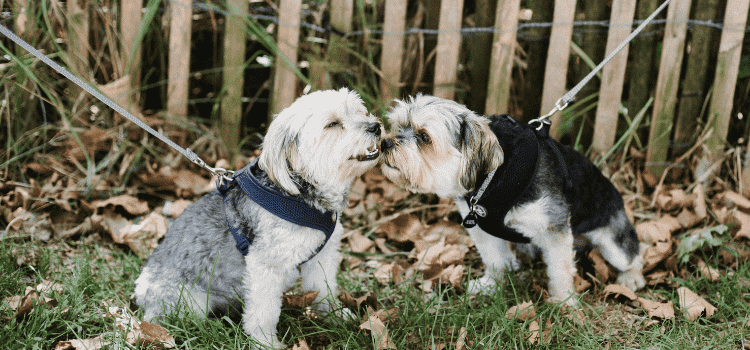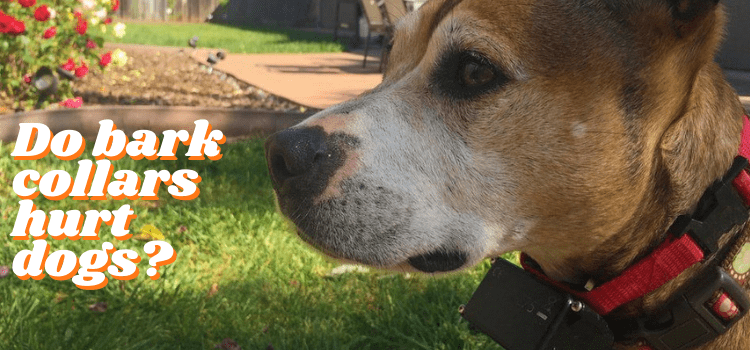The Ultimate Guide: Are Buckle Collars Safe for Dogs?

Are Buckle Collars Safe for Dogs?
Are you a proud dog owner searching for the perfect collar that combines style, functionality, and above all, safety? Look no further! In our ultimate guide, we dive into the mesmerizing world of buckle collars and unveil the truth behind their safety for our beloved furry friends. Join us as we explore this hot topic from every angle, providing you with all the information you need to make an educated decision. Don’t miss out on becoming a well-informed pet parent – let’s embark on this journey together!
Introduction to Buckle Collars for Dogs
Buckle collars, also known as snap or clip collars, are a popular choice among dog owners when it comes to selecting a collar for their furry friends. These collars consist of a strap with a buckle or clasp that fastens around the neck of the dog, and they come in various materials such as nylon, leather, or even metal.
In this section, we will discuss everything you need to know about buckle collars for dogs – their features, benefits, and potential risks. This information will help you make an informed decision about whether these collars are safe for your beloved pet.
Features of Buckle Collars
One of the main features of buckle collars is their adjustable nature. The buckle allows the collar to be easily adjusted to fit various sizes of dogs comfortably. This makes them suitable for puppies who are still growing and adult dogs who may gain or lose weight over time.
Moreover, most buckle collars come with a D-ring to which you can attach identification tags and leashes. This makes them ideal for walking your dog and ensuring they can be easily identified if they ever get lost.
Benefits of Buckle Collars
There are several benefits to using buckle collars for your dog. Firstly, as mentioned before, they are adjustable and versatile enough to fit most dogs comfortably. This means you won’t have to buy new collars as your dog grows or changes weight.
Secondly, they provide a secure fastening option that is less likely to come undone compared to other types of collars, such as slip or martingale collars. This makes them a safer option for dogs who tend to pull on their leash or are escape artists.
Lastly, buckle collars are relatively affordable and come in a variety of styles and designs, making it easy for you to find one that suits your dog’s personality.
Risks Associated with Buckle Collars
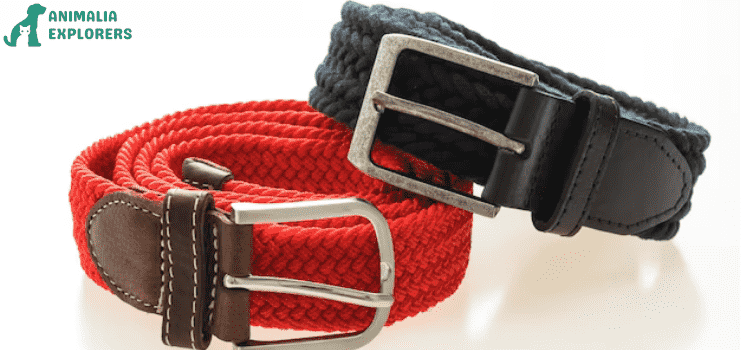
While buckle collars have several benefits, there are also some potential risks associated with using them for your dog. The main risk is choking or strangulation if the collar is not fitted properly or if the dog gets caught on something while wearing it.
To prevent this, it’s essential to regularly check the fit of the collar and make sure it is not too tight or too loose. It’s also important to supervise your dog when they are wearing a buckle collar and avoid leaving it on them when they are unsupervised or playing rough with other dogs.
Understanding Different Types of Buckle Collars
When it comes to choosing a collar for your furry friend, there are many options available on the market. One type of collar that is commonly used is the buckle collar. These collars have a simple yet effective design – they consist of a strip of material with a buckle or snap closure to secure it around your dog’s neck.
However, not all buckle collars are created equal and it’s important to understand the different types available and their potential benefits and drawbacks before deciding if they are safe for your dog.
- Basic Buckle Collar
The basic buckle collar is made from durable materials such as nylon or leather and has a single buckle for fastening. This type of collar is ideal for everyday use and provides a secure fit for most dogs. It comes in various sizes, colors, and designs, making it easy to find one that suits your dog’s personality. - Quick-Release Buckle Collar
A quick-release buckle collar has a similar design to the basic buckle collar but with an added safety feature. The buckle has a release button that allows you to quickly remove the collar from your dog’s neck in case of an emergency or if your dog gets caught on something while wearing it. - Martingale Collar
Martingale collars are designed specifically for dogs who tend to slip out of their collars easily, such as Greyhounds or other sighthounds. They have two loops – one large loop that goes around the dog’s neck and another smaller loop that the leash is attached to. When the dog pulls on the leash, the small loop tightens, preventing them from slipping out of the collar. - Prong Collar
Also known as a pinch collar, this type of buckle collar is designed for dogs who are difficult to control on walks. It has metal prongs on the inside that apply pressure to the dog’s neck when they pull on the leash, sending a signal to stop pulling. These collars should only be used under the guidance of a professional trainer and must be fitted correctly to avoid causing harm to the dog. - Half-Check Collar
A half-check collar, also known as a limited-slip or semi-slip collar, is similar in design to a Martingale collar but with no tightening mechanism. Instead, it has a chain or fabric loop that limits how far the collar can tighten when pulled on by your dog. This type of collar can help prevent dogs from backing out of their collars while still providing some correction for pulling.
The Safety Concerns with Buckle Collars
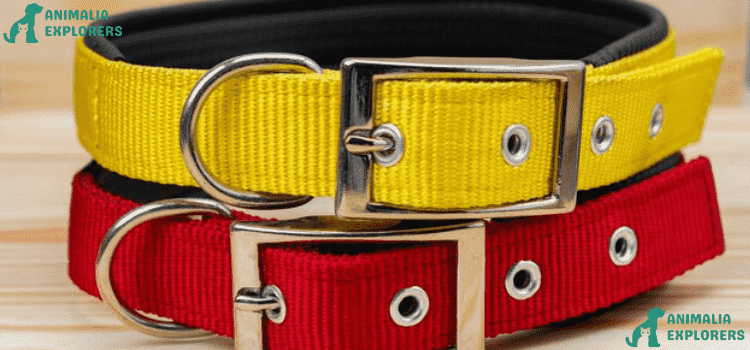
The use of buckle collars for dogs is a common practice among pet owners, but it is important to understand the potential safety concerns that come with using them. In this section, we will discuss the various safety concerns associated with buckle collars and how you can ensure your dog’s well-being when using one.
- Choking and Strangulation Hazards: The most significant concern with buckle collars is the risk of choking or strangling your dog. If not fitted properly, these collars can tighten around your dog’s neck, putting pressure on their airway and causing breathing difficulties. This can happen if the collar gets caught on something or if your dog pulls too hard while wearing it.
To prevent this from happening, always make sure to measure your dog’s neck before purchasing a buckle collar and leave enough space to fit two fingers between the collar and their neck. It is also essential to regularly check the fit of the collar as your dog grows or gains/loses weight.
- Skin Irritation and Hair Matting: Another concern with buckle collars is skin irritation and hair matting around the neck area. The constant rubbing of the collar against your dog’s skin can cause redness, irritation, and even hair loss over time.
To avoid this problem, opt for high-quality soft material collars that are gentle on your dog’s skin. Additionally, it is crucial to clean and dry the area under the collar regularly to prevent any buildup of dirt or bacteria that could irritate your dog’s skin. - Getting Stuck or Caught: Buckle collars can also pose a risk of getting stuck or caught on objects, which can lead to injuries or even strangulation. This is especially true for dogs that are left unattended while wearing a collar, as they may get their collar caught on furniture, fences, or other objects in their environment.
To prevent this from happening, always supervise your dog when they are wearing a buckle collar and make sure it fits snugly to minimize the risk of it getting caught on something. - Potential for Escape: Some dogs are skilled escape artists and can easily slip out of their buckle collars if they are not fitted properly. This can be dangerous if your dog gets lost or runs into traffic while trying to escape.
To prevent this from happening, regularly check the fit of the collar and use a martingale or slip-style collar as a backup for added security. It is also important to train your dog not to pull on their leash and try to escape when wearing a buckle collar. - Not Suitable for All Dogs: Not all dogs are suitable candidates for using buckle collars. Dogs with respiratory issues such as brachycephalic breeds (e.g., pugs, bulldogs) or dogs with neck injuries may not be able to tolerate the pressure of a buckle collar on their necks.
In these cases, it is best to consult with your veterinarian for alternative collar options that will not put strain on your dog’s neck and airway. Adjustable harnesses or head collars are often more suitable for these types of dogs.
Potential Risks for Neck Injuries

Neck injuries are a common concern for dog owners, especially when it comes to using buckle collars. Despite their convenience and popularity, these collars have been associated with potential risks for neck injuries in dogs. In this section, we will explore the various factors that can contribute to these risks and how you can prevent them.
- Improper Sizing:
One of the main reasons why buckle collars can pose a risk for neck injuries is due to improper sizing. If the collar is too loose, it may slip off or twist around the dog’s neck during walks, causing discomfort and potential injury. On the other hand, if the collar is too tight, it can restrict your dog’s breathing and cause damage to their throat or neck muscles.
To avoid these issues, always ensure that you measure your dog’s neck accurately before purchasing a buckle collar. It should fit snugly but still allow you to comfortably slide two fingers between the collar and your pup’s neck. Regularly check for any signs of chafing or redness on your dog’s neck as this could indicate an ill-fitting collar.
- Pulling on Leash:
Dogs who tend to pull on their leash while wearing a buckle collar are at increased risk of neck injuries. This constant pressure on their necks can lead to strains or sprains in their muscles and ligaments over time. Moreover, if they suddenly lunge or jerk while walking, it can cause even more significant damage to their delicate neck area. - Regular Inspection:
To ensure your dog’s safety and prevent neck injuries, regularly inspect the buckle collar for signs of wear and tear. Check for any fraying, weak points, or damage to the buckle itself. If you notice any issues, it’s essential to replace the collar promptly to avoid potential accidents. - Choking Hazard:
Another potential risk with buckle collars is the choking hazard they pose. If your dog gets caught on an object or another dog’s collar during play or while on a walk, the buckle collar can tighten quickly, leading to choking or, in extreme cases, severe injury.
It’s crucial to supervise your dog during playtime, especially in areas with obstacles or other dogs. If your dog enjoys off-leash play, consider using a breakaway collar designed to release when it’s under pressure, reducing the risk of choking.
Choking Hazards
Choking hazards are a serious concern when it comes to choosing the right collar for your dog. It is important to understand what choking hazards are and how they can impact your dog’s safety.
What are Choking Hazards?
Choking hazards refer to any objects or materials that can potentially become lodged in your dog’s throat, obstructing their airway and causing them to choke. This can be extremely dangerous and even life-threatening if not addressed immediately.
Some common choking hazards for dogs include small toys, bones, sticks, and other small objects that they may try to swallow. However, one of the most overlooked choking hazards for dogs is their collar.
How do Buckle Collars Pose a Choking Hazard?
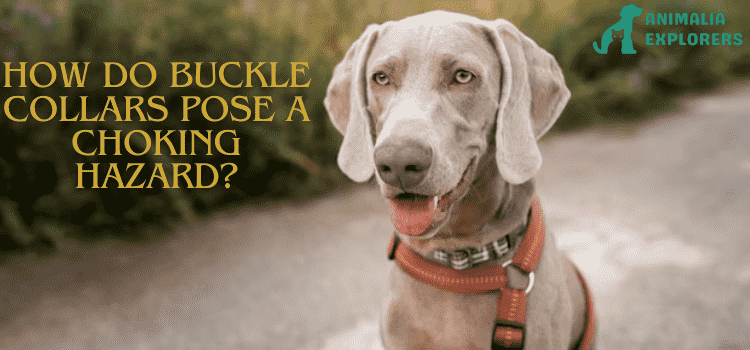
Buckle collars, also known as traditional flat collars with buckle closures, have been a popular choice among dog owners for years. They are simple, affordable, and easy to use. However, these types of collars pose a significant choking hazard for dogs.
One of the main ways buckle collars can cause choking is by getting caught on objects such as furniture or fences while your dog is playing or running around. If the collar does not have a quick-release feature, this can lead to serious injuries or even death if your dog is unable to free themselves.
Another way buckle collars can pose a choking hazard is through excessive pulling on the leash. When dogs pull against their leash, it puts pressure on their neck and throat area which can cause discomfort and restrict their breathing. This can be especially dangerous for dogs with respiratory issues or breeds with short snouts.
How Can You Prevent Choking Hazards?
The best way to prevent choking hazards is by choosing a collar that is safe and appropriate for your dog. Some options to consider include:
- Breakaway Collars
Breakaway collars, also known as safety collars, are designed to release if they become caught on an object, preventing your dog from getting stuck and potentially choking. These types of collars are recommended for outdoor cats but can also be beneficial for dogs that spend a lot of time outside.
- Martingale Collars
Martingale collars are designed to tighten slightly when pulled, preventing your dog from slipping out of their collar while still providing enough room for comfortable breathing. They are a great option for dogs that tend to pull on their leash or those with narrow heads.
- Harnesses
Harnesses distribute pressure across the chest instead of putting it all on the neck, making them a safer option for dogs prone to pulling or those with respiratory issues. There are various types of harnesses available, so be sure to choose one that fits your dog comfortably and does not restrict their movement.
- Quick-Release Buckle Collars
If you prefer to use a buckle collar, be sure to choose one with a quick-release feature. This way, if your dog does get caught on something, they can easily free themselves and avoid choking.
In addition to choosing the right type of collar, it is also important to regularly check the fit and condition of your dog’s collar and replace it if worn or damaged. Keep an eye out for any signs of discomfort or breathing difficulties while your dog is wearing their collar.
Overall, choosing the right collar for your dog is crucial in preventing choking hazards. Consider your dog’s breed, size, and behavior when making a decision, and always prioritize their safety.
Benefits of Using a Buckle Collar on Dogs
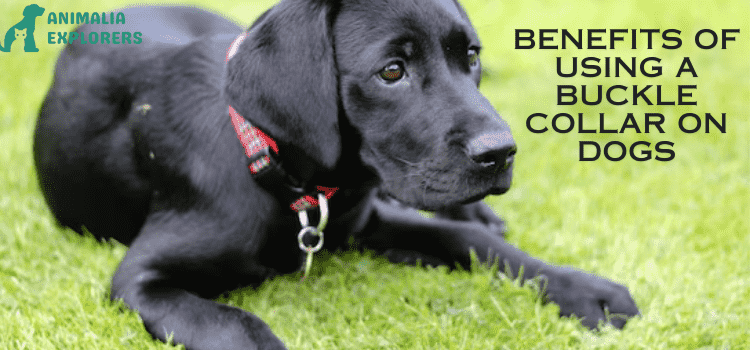
Buckle collars are the most traditional and widely used type of collar for dogs. They have a simple design, with a loop that goes around the dog’s neck and a metal buckle for adjustments. While there are many types of collars available in the market, buckle collars offer several benefits that make them a popular choice among dog owners.
- Easy to Use: One of the main benefits of using a buckle collar for dogs is its ease of use. These collars have a simple design that allows you to quickly put them on or take them off your dog without any hassle. This is especially beneficial if your dog is not used to wearing collars, as it minimizes their discomfort during the initial stages.
- Adjustable Fit: Buckle collars come with adjustable straps, which allow you to customize the fit according to your dog’s neck size. This ensures that the collar fits comfortably and securely without being too loose or too tight, which can cause discomfort or even harm to your dog.
- Durable and Long-Lasting: Most buckle collars are made from high-quality materials such as nylon or leather, making them durable and long-lasting. They can withstand rough playtime sessions and outdoor adventures without getting damaged easily, making them a cost-effective option for pet owners.
- Suitable for All Breeds: Whether you have a tiny Chihuahua or a large Great Dane, buckle collars are suitable for all breeds and sizes of dogs. As mentioned earlier, the adjustable straps allow you to customize the fit, making them an ideal choice for dogs of any size.
- Easy to Clean: Since buckle collars are made from durable materials, they are also easy to clean and maintain. You can simply wipe them with a damp cloth or wash them with mild soap and water to keep them looking clean and fresh.
- Attachment for ID Tags: Buckle collars often come with a metal ring to which you can attach your dog’s ID tags. This is important in case your dog gets lost or if someone finds them wandering alone. The tags will have your contact information, which will help reunite you with your furry friend quickly.
Easy to Adjust
When it comes to choosing a collar for your furry friend, safety should always be a top priority. While there are many types of collars available on the market, buckle collars have gained popularity over the years for their ease of use and adjustability. In this section, we will delve deeper into why buckle collars are considered safe for dogs and how they can benefit both you and your pet.
Adjustability is one of the key advantages of using a buckle collar. Unlike slip collars or prong collars that have limited sizing options, buckle collars can be easily adjusted to fit snugly around your dog’s neck. This is especially important for growing puppies who may quickly outgrow their initial collar size. With a buckle collar, you can simply loosen or tighten the fit as needed without having to purchase a new collar every few months.
Furthermore, buckle collars offer more control and security than other types of collars. The buckles are designed to securely fasten around your dog’s neck, preventing them from slipping off or getting caught on objects during walks or playtime. This ensures that your dog stays safely by your side at all times.
Another benefit of using a buckle collar is its quick-release feature. In case of an emergency where you need to remove the collar from your dog’s neck quickly, all you have to do is press the release button on the buckle and it will come off easily without causing any harm or discomfort to your pet.
Durable Material
When considering a collar for your furry companion, one of the most important factors to consider is the durability of the material. After all, you want to ensure that your dog’s collar can withstand their active lifestyle and provide long-lasting support.
Buckle collars are commonly made from a variety of materials such as nylon, leather, and even metal. Each material has its unique qualities that can affect the overall durability and safety of the collar.
Nylon is a popular choice for buckle collars due to its affordability and versatility. It is also known for its strength and water-resistant properties. However, it may not be suitable for dogs who tend to chew or scratch at their collars as they can easily fray or break under constant pressure.
Leather is another common material used in buckle collars. It offers a more natural look and feel compared to nylon but tends to be more expensive. Leather collars are also durable and can last for years if properly cared for. However, they may not be the best option for dogs who spend a lot of time in water or have sensitive skin as it can retain moisture and cause irritation.
Metal buckle collars are typically made from stainless steel or aluminum, making them incredibly strong and durable options. They are often recommended for larger breeds or dogs with thick necks as they provide extra support and security. However, some pet owners may find these types of collars too heavy or uncomfortable for their dogs.
Proper Sizing and Fitting of a Buckle Collar
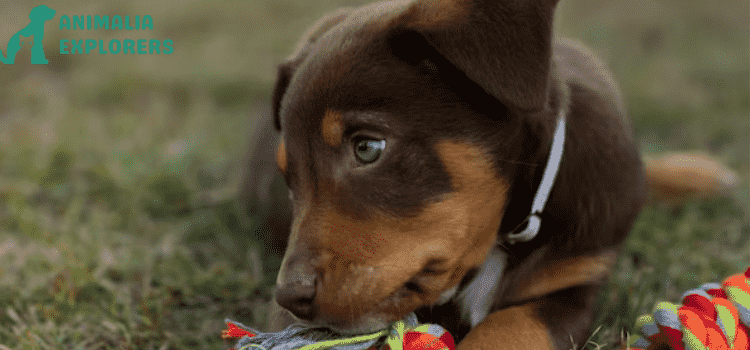
Proper sizing and fitting of a buckle collar is crucial for the safety and comfort of your dog. A poorly fitted collar can cause discomfort, injury, or even choking if it is too tight. On the other hand, a loose collar can easily slip off, putting your dog at risk of getting lost or injured.
Here are some important steps to follow when measuring and fitting a buckle collar for your dog:
- Measure your dog’s neck: The first step in finding the right size buckle collar for your dog is to measure their neck accurately. You can use a soft measuring tape or a piece of string to determine the circumference of their neck. Make sure to leave enough room for two fingers between the tape/string and your dog’s skin.
- Consider your dog’s breed and weight: Different breeds have different neck sizes, so it’s important to take into account your dog’s breed when choosing a buckle collar size. Additionally, if you have a large or heavy breed dog, you may need to opt for a wider and stronger buckle collar to provide adequate support.
- Check the sizing chart: Most manufacturers provide a sizing chart for their collars based on measurements such as neck circumference and weight range. Use this as a guide when choosing the right size for your dog.
- Try it on before purchasing: If possible, bring your dog with you when shopping for a buckle collar so you can try different sizes on them before making a purchase. This will ensure that you get the perfect fit for your dog.
- Adjust the fit: Once you have chosen the right size collar, it’s important to adjust it properly on your dog. Make sure to leave enough room for two fingers between the collar and your dog’s skin. This will ensure that the collar is not too tight or too loose.
- Check for any discomfort: After fitting the buckle collar on your dog, check for any signs of discomfort such as redness, chafing, or hair loss around the neck. If you notice any of these signs, the collar may be too tight and needs to be adjusted.
- Regularly check and adjust: As your dog grows or gains/loses weight, it’s important to regularly check and adjust their buckle collar to ensure a proper fit. A good rule of thumb is to check their collar every month and make adjustments as needed.
By following these steps, you can ensure that your dog’s buckle collar fits properly and comfortably, keeping them safe and secure while out on walks or playing. If you have any concerns about the fit of your dog’s collar, consult with a veterinarian or professional pet trainer for further guidance.
Measuring Your Dog’s Neck Size
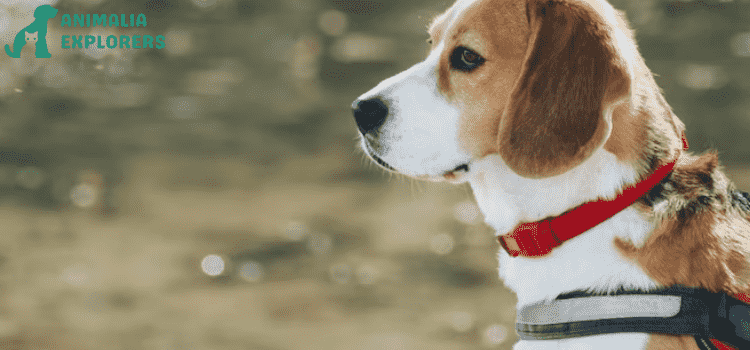
Measuring your dog’s neck size is an important step in choosing the right buckle collar for them. A properly fitting collar ensures both comfort and safety for your beloved pet. Here are the steps to follow when measuring your dog’s neck size:
Step 1: Gather Your Supplies
Before you start measuring, make sure you have a flexible measuring tape or a piece of string, a pen, and paper handy. It’s also helpful to have someone else assist you in holding your dog still during the measurement process.
Step 2: Find the Right Position
Position your dog in a standing or sitting position with their head up and neck fully extended. This will give you an accurate measurement of their neck size.
Step 3: Measure the Neck Size
Place the measuring tape or string around your dog’s neck where their collar usually sits. Make sure it is snug but not too tight as this can lead to discomfort or choking. If using a string, mark where it overlaps and then measure its length with a ruler.
Step 4: Note Down the Measurement
Write down the measurement in inches or centimeters – whichever unit of measurement is most comfortable for you – on a piece of paper.
Step 5: Consider Adding Extra Space
If you plan on buying an adjustable buckle collar, it’s essential to add an extra inch or two to your measurement so that there is room for adjustment as your dog grows or gains/loses weight.
Step 6: Check Against the Sizing Chart
Different brands and types of collars may have different sizing charts, so make sure to check the chart for the specific collar you are interested in purchasing. If your measurement falls between two sizes, it’s generally recommended to go for the larger size.
Step 7: Try It On
Once you have chosen a collar based on your dog’s neck size, try it on and make sure it is comfortable and not too loose or tight. You should be able to comfortably fit two fingers between the collar and your dog’s neck.
By following these steps, you can ensure that you choose a buckle collar that fits your dog properly and keeps them safe and comfortable during walks and other activities.
FAQs
1. Is a plastic or metal buckle better for dog collars?
Both plastic and metal buckles have their advantages. Metal buckles are generally more durable and suitable for stronger or larger dogs, while plastic buckles may be lighter and better for smaller dogs. The choice depends on your dog’s size and activity level.
2. Which type of dog collar is considered the safest and most humane?
The safest and most humane type of dog collar is often considered to be a flat collar or a martingale collar. These collars are designed to provide control without causing discomfort or harm to the dog.
3. Do vets recommend prong collars?
Most veterinarians do not recommend prong collars due to their potential for causing harm or discomfort to dogs. There are usually more humane and effective training tools and methods available.
4. What kind of collar is best for a dog?
The best type of collar for a dog depends on their individual needs and behavior. Flat collars are suitable for most dogs, while martingale collars are good for escape-prone dogs. For training purposes, consider positive reinforcement methods and tools like harnesses or head collars, rather than aversive collars.
5. How can I properly clean and maintain my dog’s collar?
If you need to clean your dog’s collar, start by checking the care instructions on the collar label. In most cases, mild soap and water should be enough to clean it. Rinse it thoroughly and make sure it’s completely dry before putting it back on your dog. It’s a good idea to regularly inspect the collar for any signs of wear and tear. If you notice any damage, it’s best to replace the collar as soon as possible.




